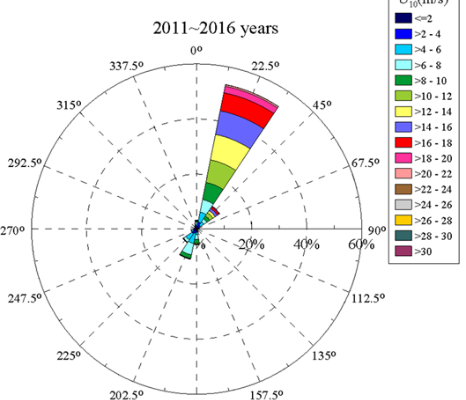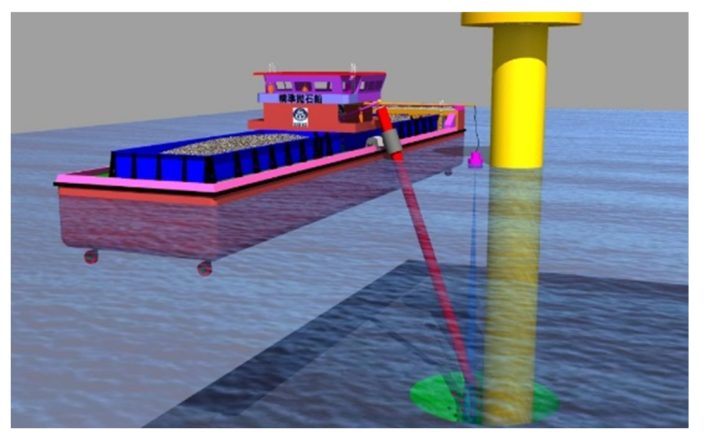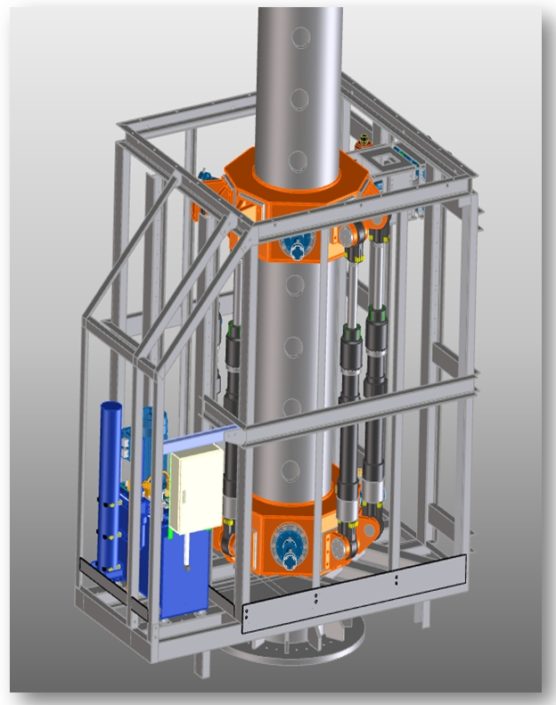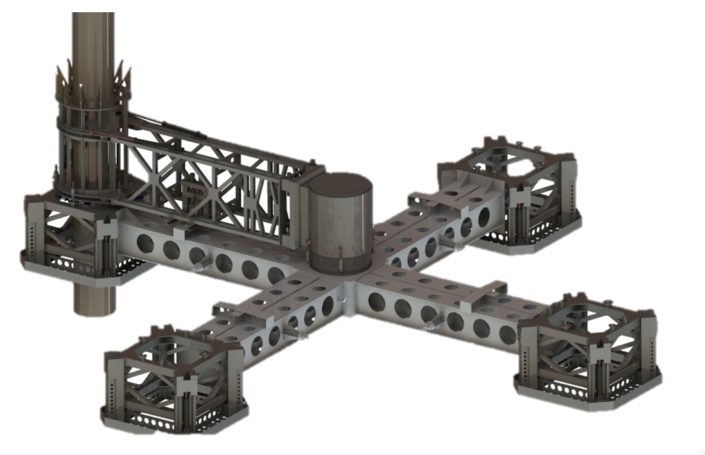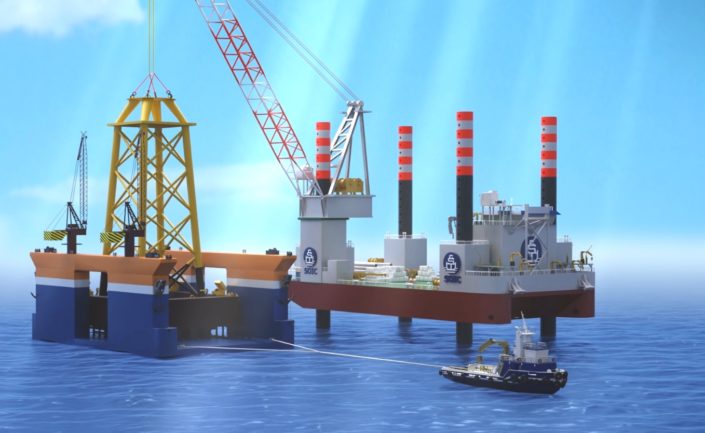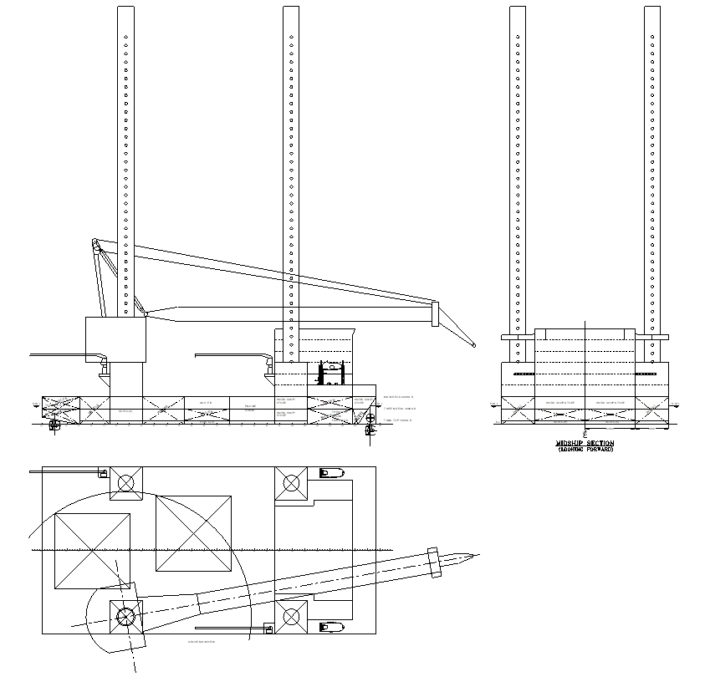Key Technology of Offshore Engineering
Analysis and evaluation of marine environmental data for offshore wind farms
According to the guidelines of the International Association of Classification Societies, SOIC provides statistical data and analysis results for offshore wind farms. This can provide a feasibility assessment for the offshore wind farm, and can also be used as a reference during of the construction and maintenance period.
Assessment technology for ship transportation safety in wind farms
SOIC utilizes the data simulated by the National Oceanic and Atmospheric Administration (NOAA), to analyze the marine environmental data for each offshore wind farm site. Three weather window scenarios were assumed based on the report of the maintenance plan for the NL7 wind farm in the North Sea. An evaluation and calculation of the time to repair (TTR) and the waiting time was carried out, as well as a statistical analysis for the workable days duration of 24, 48 and 168 hours. In the assessment of the marine transportation, the extreme wave height was calculated by the simulated data according to the DN·VGL guideline. The report was approved by DNV for marine transportation. With reference to the maintenance categories of European countries , the marine safety and maintenance strategy was studied and customized for the domestic company.

According to DNV-GL for maritime transport regulations (6.7.5), the probability of encountering an extreme value of wind speed or significant wave height during a particular transport that is reached or exceeded once on average for every transport is 0.1.
![]()
𝑭𝑥(x):
Weibull cumulative frequency distribution
- The extremes used for design shall not be less than the 1-year return monthly extremes.
Wind Resource Assessment
SOIC cooperates with the offshore wind energy policy to conduct the Wind Resource Assessment Project. The red area in the figure below is the actual offshore wind farm to be evaluated. The Taipower met mast will be used correlated with the long term met mast for Wind Resource Assessment.

1. Wind Data Correction and Flagging
Erroneous measurement data should be corrected or flagged. After flagging we clearly report on the percentage of data that can be used.
2. Measure Correlate Predict
Often there is only short term data available at the site (minimum of 1 year). In these cases correlation is often made with a long term met mast (>10 years of data). This procedure is called Measurement Correlate Predict (MCP).
- In order to do an MCP analysis the long term data and short term data must have at least 1 year of overlapping data.(A-1)
- The next step is to make sure the reference site and the target site have the same data timestep.(B-1)
- Next you can create a figure with on the x-axis the reference station (long term) and on the y-axis the target station (short term) wind speed. You can select plot the points at the same dates and time. Finally you can fit a line through the points: 𝑓(x)=ax+b (C-1)There are different ways to obtain the best fit, but often Least Square Errors method is used.
- The parameters determined from the linear fit can then be used predict 10 years of data at the target site from the long term metmast. A similar procedure can be followed for the wind direction.(D-2)
The results can be plotted according to different wind directions, time, seasons or different wind speeds.
3. Vertical Conversion
If measurements are taken at different heights the shear exponents can be calculated. This is done by plotting the mean wind speeds at different heights and fit a power curve to the data: 𝑉=𝑉0(ℎ/ℎ0)^𝛼
Where:
V= the wind speed at height ℎ
V0=the wind speed at height h0
α=the shear exponent
Another method that can be used is a log-law fit.
The exponents and the power law equation can then be used to translate the wind speeds to hub height.
Offshore Wind Power Construction and Machine Tools Development
In order to achieve the objectives of the “Four-year Wind Power Promotion Plan” of our government, the SOIC assists local industry to establish capabilities of maritime construction and maintenance to enhance the added value of the industry and promote the international standing and competitiveness.
網站搜尋
Contact Us
Taipei Office:
251401, 14F,No.27, Sect. 2, Zhongzheng E. Road, Tamshui Dist., New Taipei City, Taiwan, R.O.C
TEL:+886-2-2808-5899 FAX:+886-2-2808-5866
Zhongzheng Office:
800306, Rm. 3, 7F., No. 182, Zhongzheng 2nd Rd., Xinxing Dist., Kaohsiung City 800, Taiwan, R.O.C.
TEL:+886-7-223-9822 FAX:+886-7-224-8247
Kaohsiung Office:
801662, 10F., No. 436, Chenggong 1st Rd., Qianjin Dist., Kaohsiung City , Taiwan, R.O.C
TEL: +886-7-201-0885 FAX:+886-7-201-5885
Pioneered Project Management Office:
804060, 8F., No.335, Wenxin Rd., Gushan Dist., Kaohsiung City, Taiwan, R.O.C.
TEL:+886-7-582-3228 FAX:+886-7-552-4892

